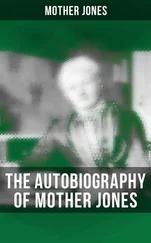Tortoiseshell cats have a mottled appearance, which comes from small groups of yellow and black hairs mixed together. All tortoiseshells are females and are the offspring of a cross in which one parent passes on a gene for black and the other transmits one for yellow hair. Because the coat-colour gene is sex-linked about half the skin cells of the kitten switch off the X carrying the black variant and the remainder that for yellow.The coat is a mix of the two types of hair, the size of the patches varying from cat to cat.
The same happens in humans. If a woman has a colourblind son, she must herself have one normal and one abnormal colour receptor. When a tiny beam of red or green own word for a deviation from the norm). It was the first of many inborn errors of metabolism. The actual gene itself was found just four years before the century ended. The key to its discovery showed how wide the genetical net must spread. An identical was found in a fungus, and that piece of damaged DNA used to search out its human equivalent.
What genes are made of canu- from the discovery it was possible to change the shape ot luck-rial colonies by inserting a 'transforming principle' extracted Irom a relative with different shaped colonies. That substance was DNA, discovered many years before in some rather disgusting experiments using pus-soaked bandages. It was the most important molecule in biology.
The story of how the structure of DNA, the double helix, was established is too well known to need repeating. The molecule consists of two intertwined strands, each made up of a chain of chemical bases — adenine, guanine, cytosine and thymine — together with sugars and other material. The bases pair with each other, adenine with thymine and guanine with cytosine. Each strand is a complement of the other. When they separate, one acts as the template to make a matching strand. The order of the bases along the DNA contains the information needed to produce proteins. Every protein is made up of a series of different blocks, the amino acids. The instructions to make each amino acid are encoded in a three-letter sequence of the DNA alphabet.
The inherited message contained within the DNA is passed to the cytoplasm of the cell (which is where proteins are made) through an intermediary, RNA. This ribose-nucleic acid comes in several distinct forms, each involved in passing genetic information to where it is used.
The DNA molecule — the agent of continuity between generations — has become part of our cultural inheritance. The new ability to read (and to interfere with) its message has transformed our vision of our place in nature and our dominion over its inhabitants. It is, nevertheless, worth remembering that the laws of genetics were worked out with no knowledge of where or what the inherited units might be. Like Newton, Mendel had no interest in the details. He was happy with a universe of interacting and independent particles which behaved according to simple rules. These rules worked well for him, and often work just as well today.
Again like Newton, Munle! was triumphantly right, but only up to a point. Molecular biology has turned a beautiful story based on peas into a much murkier tale which looks more like pea soup. The new genetical fog is described in the next clupu-r.
Chapter Three. HERODOTUS REVISED
The Greek traveller Herodotus Ml ih.u he knew the world well. He voyaged around the Mediterranean and heard much of the Phoenicians' journeys into Africa, liy pulling what he knew of the globe's landmarks together he came to the conclusion that 'Europe is as long as Africa and Asia put together, and for breadth is not, in my opinion, even to be compared with them. 7Herodotus had things in about the right places in relation to each other but the physical distances between them were hopelessly wrong.
For two thousand years maps could only be made in the Greek way. They were relative things, made by trying to fit landmarks together, with no measure of the absolute distances involved. Familiar bits of the countryside loomed far larger than they deserved. Mediaeval charts were not much better. Although the shape of Africa is recognisable it is much distorted. The cartographers' perception of remoteness was determined by how long it took to travel between two points rather than how far apart they really were.
Genetics, like geography, is about maps; in this case the inherited map of ourselves. Not until the invention of accurate clocks and compasses two thousand years after Herodotus was it possible to measure real distances on the earth's surface. Once these had been perfected, good maps soon appeared and Herodotus was made to look somewhat foolish. Now the same thing is happening in biology. Geneticists, it appears, were until not long ago making the same mistakes as the ancient Greeks.
Just as in mapping the world, progress in charring genes had to wait for technology. Now that it has arrived the shape of the biological atlas has been revolutionised, with a change in world-view far greater than that which separates the geography of the Athenians from that of today. What, even three decades ago, seemed a simple and reliable chart of the genome (based, as it was, on landmarks such as the colour of peas or of inborn disease) now looks very deformed.
The great age of cartography was driven, in the end, by economics: by the desire to find new materials and new markets. The mappers' Columbian ambitions needed a Ferdinand and Isabella. Kvcn fifty years ago, to those in the know, there seemed to be money in DNA, and many great foundations gave cash to the subject. Not until the 1980s did it seem feasible to chart the whole lot and, even then, it seemed that the task would take decades. Such is the rate of progress that the job is now, just after the millennium, in effect complete. The politician's ear and the scientist's ego shifted cash into Programs, Institutes and Centres as the free market in science was abandoned in favour of the planned economy; but, in the end, the Human Genome Project worked and at last we have the map of ourselves. Taxpayers (most of them American) played an important part, but in its latter days the job was split, with some acrimony, between governments in consort with charities (such as the Wellcome Foundation at its campus near Cambridge) and private institutions, the biggest run by a defector from an American government laboratory. There was a mad rush to patent genes. Large sums changed hands. The rights to one technology were sold to a Swiss company for three hundred million dollars. At the end of the DNA bonanza the altruists were ahead and large parts of the information were fed onto the internet, where it is available to all.
The idea of a gene map came first not from technology but from deviations from Mendel's laws. Morgan, with his flies, found lots of inherited attributes that followed the rules. Their lines of transmission down the generations were not connected to each other; like pea colour and shape the traits were independently inherited. There was one big exception. Certain combinations of characters, those on the sex chromosomes, did not behave in this way. Soon, they were joined by others.
Mendel found that the inherited ratios tor the colour of peas were not affected by whether the peas were round or wrinkled. Morgan, in contrast, discovered that, quite often, pairs of characteristics (such as eye colour and sex) travelled down the generations together. Soon, many different genes (such as those for eye colour, reduced wings and forked body hairs) in flies were found to share a pattern of inheritance with sex and, as a result, with the X chromosome. They were, in flagrant disregard of Mendel's rules, not independent. To use Morgan's term, they were linked.
Within a few years, many other traits turned out to be transmitted together. Experiments with millions of flies showed that all Drosophila genes could be arranged into groups on the basis of whether or not their patterns of inheritance were independent. Some combinations behaved as Mendel expected. For others, pairs of traits from one parent tended to stay together in later generations. The genes involved were, as Morgan put it, in the same linkage group. The number of groups was the same as the number of chromosomes. This discovery began the 'linkage map' of Drosophila and became the connection between Mendelism and molecular biology.
Читать дальше
Конец ознакомительного отрывка
Купить книгу












